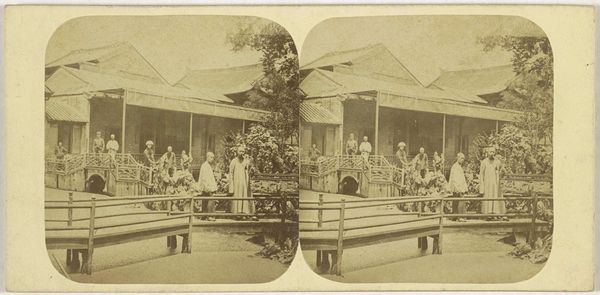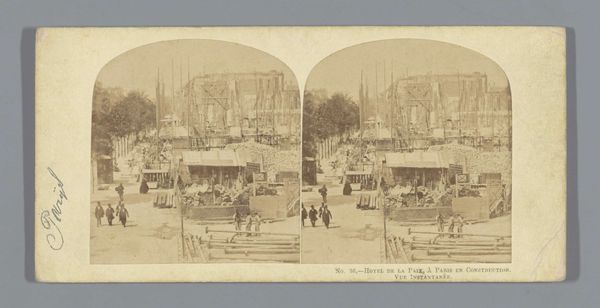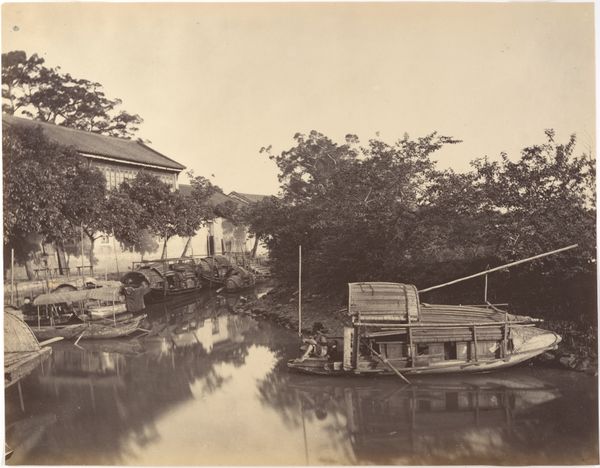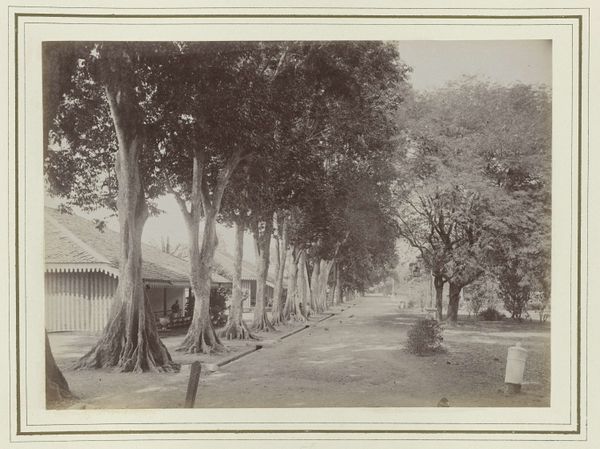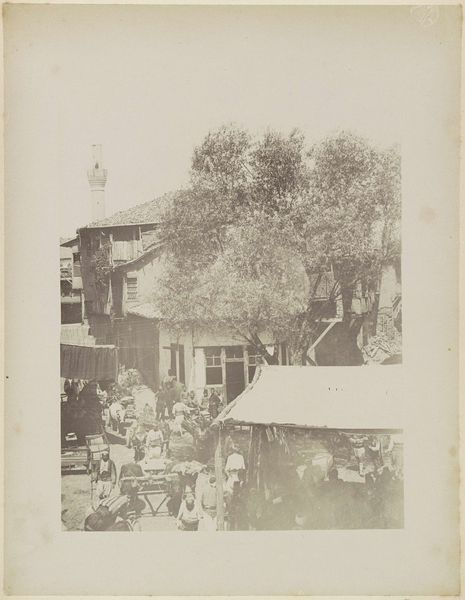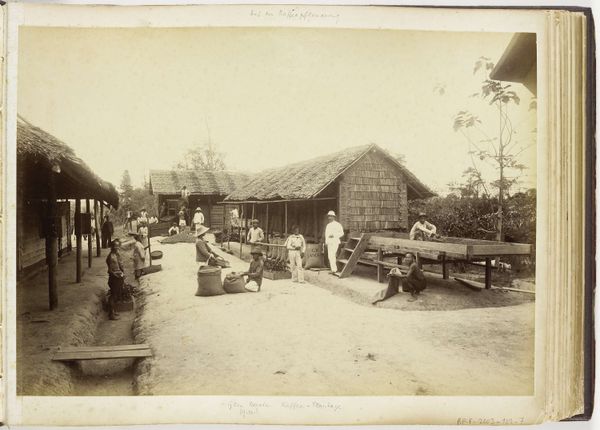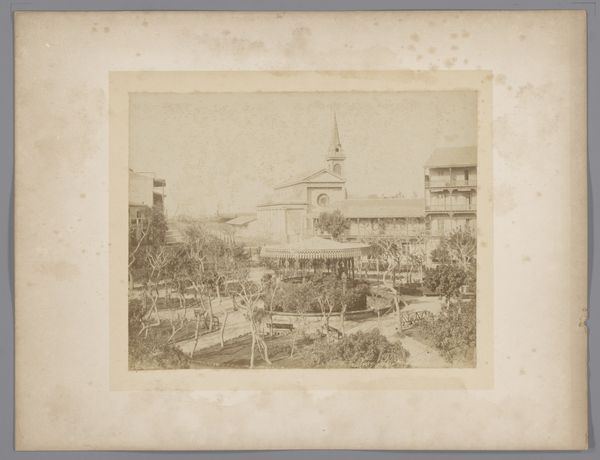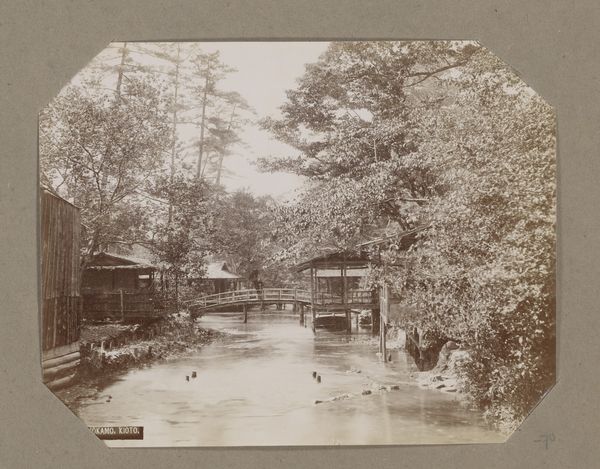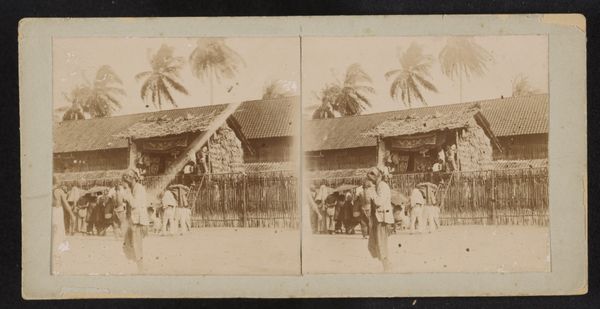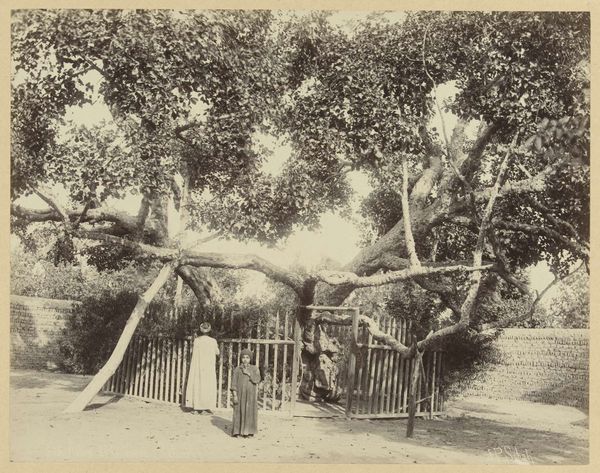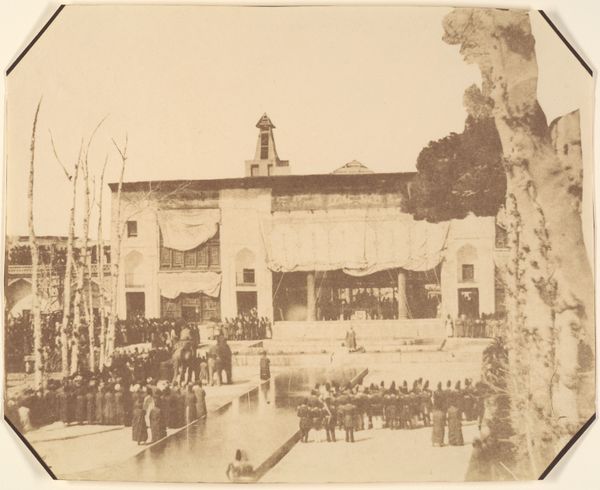
Dimensions: height 57 mm, width 100 mm
Copyright: Rijks Museum: Open Domain
Curator: What we have here is a gelatin silver print entitled "Plantentuin, mogelijk in Sint Petersburg," tentatively dated between 1880 and 1900 and credited to Albert Felisch. Editor: It exudes this strangely ethereal yet meticulously crafted air, almost staged. There’s something about the texture that evokes a soft romanticism. How would you break down the compositional structure? Curator: The photograph seems acutely aware of pictorial conventions—note the calculated arrangement of the flora and fauna. The bridge arches just so to draw the eye, yes? And there's that pavilion-like structure lurking behind it, providing an odd visual counterpoint to the wildness of the scene. Editor: Exactly! That interplay is fascinating. The Romantic era fascination with untamed nature, juxtaposed with what feels like an intentionally fabricated 'wild' scene within a controlled setting. It reveals much about 19th-century societal attitudes toward nature as spectacle. Was this for public consumption, perhaps a symbol of imperial power to display access to nature's wonders? Curator: I suspect you’re not far off the mark. The botanical garden as a symbolic construct echoes throughout European expansionism during the era. Observe how Felisch's strategic use of lighting—soft but distinct—creates almost theatrical contrast and emphasizes the texture across varying organic surfaces, delineating the botanical variety and the architectural elements, as well as highlighting a subtle semiotic system—artful intervention in what purports to be an otherwise untouched domain. Editor: This curated view serves a particular narrative. I keep circling back to this manufactured element—to whose narrative is it crafted, what is highlighted by its creation and for what viewership. A silent display of might. It’s rather captivating and more than a little chilling, isn’t it? Curator: In that calculated artificiality is, perhaps, the seed of its continuing interest for us today, it certainly prompts one to look deeper. Editor: Yes, the visual construction becomes a conduit, illuminating our interpretation of historical power structures; quite an experience and thought-provoking reflection of photography.
Comments
No comments
Be the first to comment and join the conversation on the ultimate creative platform.
